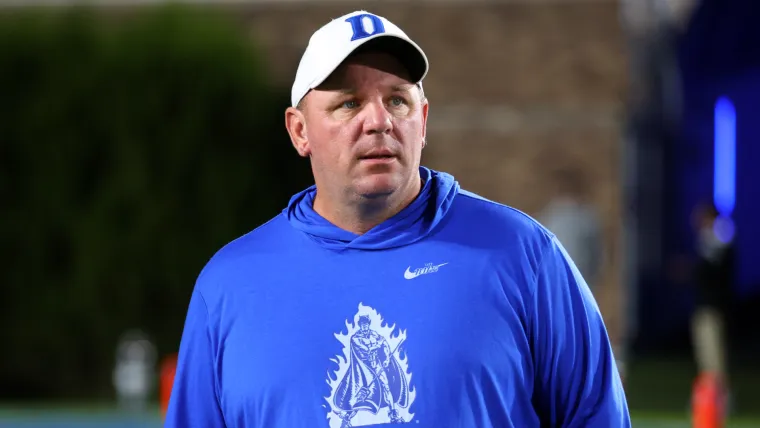In his second year, Texas A&M head coach Mike Elko has gained a stronger understanding and intuition for the program, leading to improved familiarity and confidence in guiding the team’s direction.

The transition to a new coaching regime in college football is often marked by an initial period of adjustment, learning, and adaptation. The first year can be a steep learning curve, as coaches familiarize themselves with not only the roster, recruiting landscape, and institutional culture but also the nuances of the team’s identity and expectations. By the second year, however, a coach’s understanding tends to deepen—this “better feel” for the program can translate into more confident decision-making, strategic refinement, and a clearer vision for success.
For Texas A&M, under the leadership of head coach Mike Elko, this evolution from Year 1 to Year 2 signifies more than just experience; it embodies a process of gaining insight into the program’s unique dynamics, strengths, and areas requiring development. This piece delves into how Elko’s improved understanding impacts his leadership, the team’s performance, and the overall trajectory of the program.
The Context: A New Era at Texas A&M
Texas A&M is an ambitious football program with a storied history, a passionate fan base, and high expectations. The coaching change to Mike Elko, a respected defensive mind with prior experience at Notre Dame and Duke, represented a strategic move aimed at building a resilient, disciplined team capable of competing at a high level.
Year 1 Challenges and Learnings
The initial year often involves an adjustment period characterized by:
Implementing new systems and schemes
Building trust with players and staff
Assessing roster talent and identifying gaps
Navigating institutional culture and recruiting pipelines
Managing expectations amid a competitive SEC environment
Elko’s first year at Texas A&M undoubtedly involved these challenges. He had to learn the intricacies of the roster, establish his coaching philosophy, and set the tone for the program’s future. Naturally, this period is marked by trial and error, with the coach gathering critical insights about what works and what doesn’t.
Transition to Year 2: The Opportunity for Growth
With the foundational understanding established, Year 2 presents an opportunity for Elko to leverage his “better feel” for the program. This involves applying lessons learned, refining strategies, and fostering a culture aligned with his vision. The result is often a more cohesive team, clearer leadership pathways, and a strategic approach rooted in a deeper understanding of personnel, opponents, and internal dynamics.
Developing a “Better Feel”: What Does It Entail?
Gaining a “better feel” for a program encompasses multiple facets:
Roster Knowledge: Understanding player strengths, weaknesses, and development potential.
Team Culture: Recognizing the team’s identity, work ethic, and mental resilience.
Recruiting Insights: Identifying recruits who fit the system and culture.
Game Strategy and Philosophy: Refining schemes based on personnel and opponent tendencies.
Leadership and Communication: Building trust and authority among players and staff.
Program Infrastructure: Navigating administrative and institutional relationships.
How Elko’s Experience Enhances These Areas
Roster Familiarity: By Year 2, Elko has observed players in multiple game situations, recognizing who can be relied upon in critical moments and which areas need targeted development.
Cultural Alignment: He has begun shaping the team’s identity, instilling discipline and resilience, and ensuring that players buy into his vision.
Strategic Refinement: Elko’s defense, known for its discipline and adaptability, becomes more tailored to the team’s strengths, leading to more effective game plans.
Recruitment and Development: Insights from Year 1 help him identify and prioritize recruits and develop existing talent more efficiently.
Impact on Leadership and Confidence
Increased Clarity in Vision and Expectations
A coach’s confidence often correlates with their understanding of the program. In Year 1, uncertainty about personnel and system implementation can cause hesitation. By Year 2, Elko’s clearer grasp of what works and what doesn’t allows him to set precise goals, communicate expectations effectively, and implement strategies with conviction.
Enhanced Player-Staff Relationships
As Elko spends more time with his players and staff, trust deepens. His increased familiarity with individual personalities and motivations enables him to tailor his leadership approach, motivate players more effectively, and foster a cohesive team environment.
Decision-Making and In-Game Adjustments
A “better feel” for the program translates into sharper decision-making. Elko can better anticipate opponent tendencies, recognize developing issues within his team, and make timely adjustments—be it in-game tactical shifts or practice emphasis.
Building a Culture of Resilience and Accountability
Understanding the team’s internal dynamics allows Elko to reinforce values like accountability, discipline, and resilience—traits essential for success in SEC football. His confidence in these initiatives is bolstered by his firsthand knowledge of the team’s character and potential.
Strategic Refinements and Performance Outcomes
Scheme Optimization
Elko’s defensive background emphasizes discipline, adaptable schemes, and situational awareness. With a year of familiarity, he can tailor defensive packages to exploit opponent weaknesses more effectively, leading to improved results.
Player Development
Knowing which players respond best to coaching techniques allows for targeted development. This can elevate the overall talent level and create more reliable units on both sides of the ball.
Game Planning
A nuanced understanding of opponent tendencies and team capabilities enables more precise game plans. This reduces the reliance on broad strategies and allows for tailored adjustments that maximize the team’s strengths.
Managing Expectations and Building Momentum
As confidence grows, Elko can set realistic goals and communicate a compelling vision that resonates with players, staff, and fans. This momentum can foster a winning culture, even in the face of tough SEC competition.
Broader Implications for the Program
Recruiting and Future Growth
A coach who demonstrates a clear understanding and confident leadership can attract recruits who buy into his vision. Elko’s second-year “better feel” enhances his credibility as a program builder.
Stability and Long-Term Success
Gaining a deeper insight into the program’s needs and strengths allows Elko to establish sustainable practices, develop a pipeline of talent, and create a culture poised for long-term success.
Building Resilience
Understanding the internal and external factors affecting the program enables Elko to foster resilience, adaptability, and mental toughness—traits vital for success in the high-stakes college football environment.
Challenges and Considerations
While a “better feel” improves confidence and strategic clarity, it is not a guarantee of immediate success. Challenges such as injuries, recruiting constraints, and the inherent competitiveness of the SEC remain. However, Elko’s enhanced understanding equips him to navigate these obstacles more effectively.
Additionally, the transition from Year 1 to Year 2 is not solely about tactical improvements but also about cultural shifts. Maintaining humility, fostering continuous learning, and managing expectations are crucial as Elko continues to develop the program.
Final Reflection: The Significance of Year 2 for Mike Elko at Texas A&M
In college football, the second year often marks a pivotal point for a coach. It’s when initial impressions solidify into a deeper understanding, and strategic plans evolve into tangible results. Mike Elko’s “better feel” for the Texas A&M program signifies a maturation of his leadership, a refinement of his strategies, and a bolstered confidence that can propel the team toward greater success.
This evolution is more than just familiarity; it’s a holistic comprehension of what makes the program tick, where the opportunities lie, and how to cultivate a resilient, disciplined, and competitive team. Such insights empower Elko to make informed decisions, inspire his players, and implement a sustainable vision for Texas A&M football.
As the program enters this critical phase of growth, Elko’s improved understanding serves as a foundation upon which to build a competitive and enduring powerhouse in college football’s toughest conference. His journey from initial adjustment to confident leadership embodies the core principles of coaching—learning, adapting, and leading with clarity and conviction.









